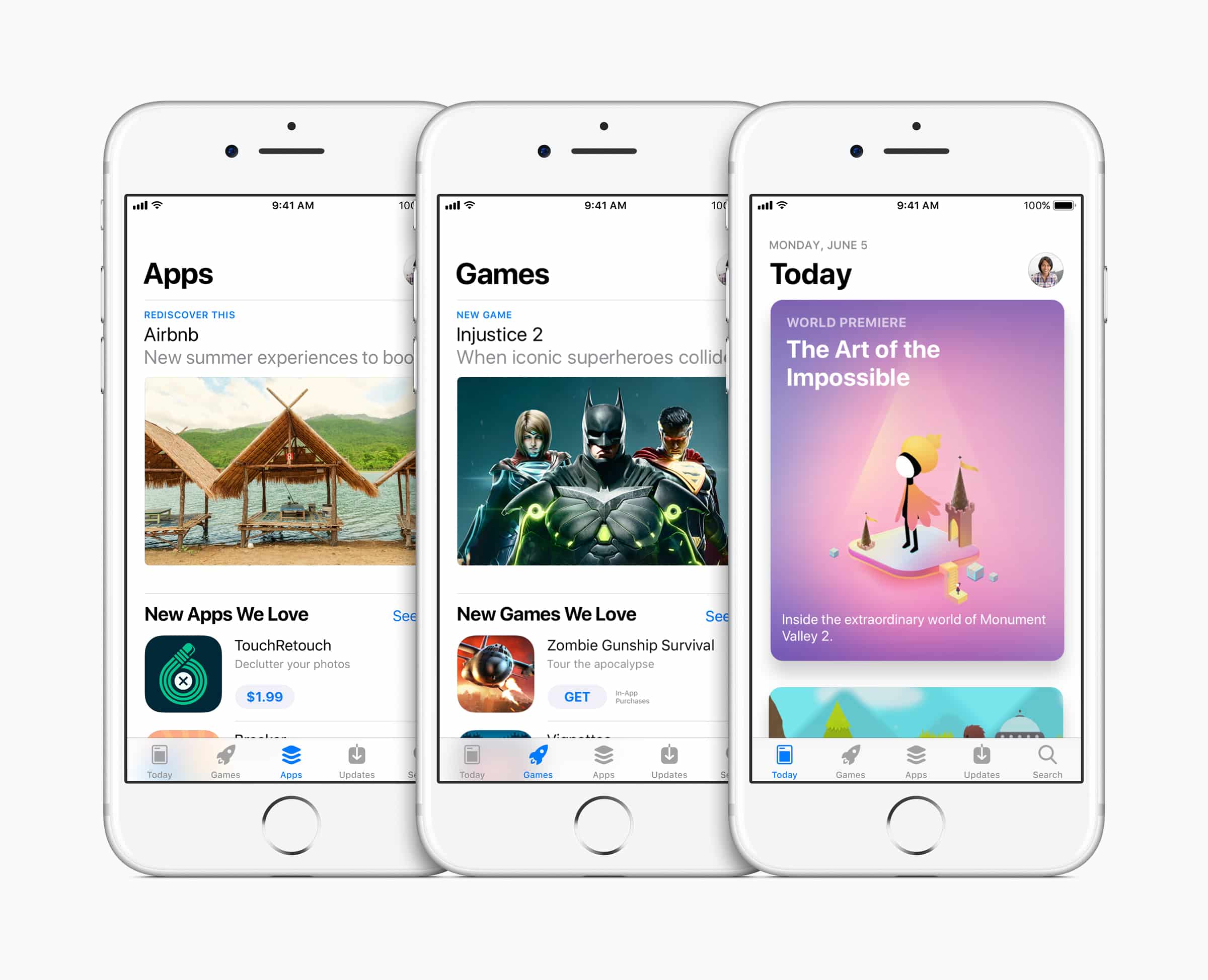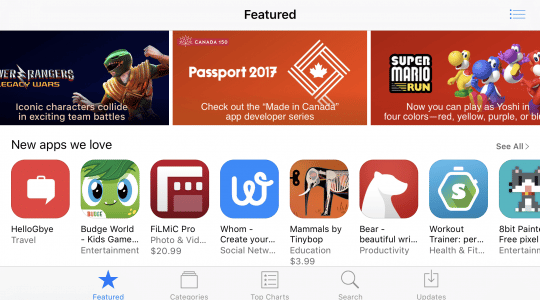
App Store Optimization (ASO) is a long and complicated process. Contrary to what some may believe, it’s not a quick and easy solution to your app marketing problems. It takes time to implement, but it can also yield fantastic results and also provides a solid base for your other app marketing strategies.
There are tons of guides out there pertaining to ASO. Because ASO is evolving so quickly, the problem with many of these guides is that many are outdated already. Rather than providing a comprehensive step-by-step guide that we’d have to update every few months, we decided to write a post highlighting the key ASO fundamentals that we believe will stay constant for a long time (however, we do have guides we continue to update as well. For example, check out this Ultimate Guide to Keyword Research).
The rest of this post will cover the four timeless keys to ASO that you should always keep in mind when working on optimizing your app for the app stores.
1 – Research
Research is an important part of any marketing strategy you decide to implement, and app store optimization is no exception. However, before you dive into optimizing your app, you need to research the environment. This includes a number of different areas, but can be boiled down to two main things: your app and your competitors.
Your App
You’re probably thinking, “My app? I already know everything there is to know about my app. What do I need to research?” When we say your app, we’re not talking about the code or its features. We’re talking about your app in the context of the app stores. How is it performing in search? Is it ranked in the Top Charts? What search terms is it ranking well for? What isn’t it ranking well for?
To really improve your visibility in the app stores, you need to have answers to all these questions and more. If you don’t know where you’re doing well and where you’re not, it’s hard to identify areas to improve.
Your Competitors
You’ll want to answer many of those same questions for your competitors as well. Understanding what keywords your competitors rank well for helps you get an idea for the search terms they care about, and can give you insights into their strategy. You can also see where your app ranks compared to your competitors. Are there search terms they’re targeting that you didn’t think about? Do you want to compete for these keywords or find another niche to go after? Are they ranking well for a keyword where you’re ranking poorly? What about their ratings and reviews? Do their user reviews shed some light on possible opportunities for you? Maybe there’s a feature users really like or dislike.
There are countless questions and insights you can get from your competitors, but to take full advantage of them, you need to research.
2 – Test
Testing is the next key to conducting thorough and fundamental ASO. Unfortunately, testing for your apps (especially for ASO) is not nearly as easy as it is on the web. But that doesn’t make it any less important. There are a number of key aspects you’ll want to test as it pertains to ASO. These include: keywords, keyword placement, screenshots, and description.
Keywords
After researching your app, you should have a solid understanding of what keywords you’re ranking well for and where you need to improve. You might also identify completely new keywords you want to target. It’s important to constantly test these. Try switching out certain keywords to see if ranking for one set of terms gets you more downloads than another set. You’ll mainly want to try out keywords with different combinations of difficulty, volume, and relevance. You might want to be really aggressive and target high volume keywords with high difficulty. Or maybe you take a more conservative approach and target lower volume terms where you’ll have a better chance to ranking highly.
Try creating two lists of keywords for both an aggressive and conservative approach. Test out each list and see if you notice any change in rankings and/or downloads.
Keyword Placement
Keyword placement is an important element to test as well because placing a keyword in a certain location can help you rank higher for that keyword. Although where and how you signify a keyword is important might change in the future, what likely won’t change is the fact that you will be able to pick certain keywords that are more important to your app and you will rank higher for these keywords.
You can use placement to get even more granular with your keyword testing. Within each list of keywords, try switching out your important head terms and see if you notice a change in ranking and/or downloads.
Screenshots
Testing screenshots is a great way to try to improve conversion. With the new Apple iTunes Connect page, you can actually see how many users have visited your app’s page and how many of those people have downloaded your app. Try testing different screenshots to see if you can boost your conversion rates.
Description
 You can include the description in the same tests as some of the other keys we’ve mentioned. Creating a compelling description can definitely factor into your conversion rates. Although the entire description is important, you can also test what the first few lines in your description say. This can be important because on a mobile device, the description is often cut off. Do your first two lines really hook the user into wanting to know more? Do you show social proof here? Have you included any awards you’ve won? Try testing different things to really optimize your description.
You can include the description in the same tests as some of the other keys we’ve mentioned. Creating a compelling description can definitely factor into your conversion rates. Although the entire description is important, you can also test what the first few lines in your description say. This can be important because on a mobile device, the description is often cut off. Do your first two lines really hook the user into wanting to know more? Do you show social proof here? Have you included any awards you’ve won? Try testing different things to really optimize your description.
You can also use the description to help test keyword placement. See if you rank for keywords in your description (we know Google Play looks at the description, but the Apple App Store is still unproven). If you do rank for keywords used, does frequency impact your ranking? How does your ranking for keywords in your description compare to other keyword locations?
One important thing to keep in mind when testing is that you want to isolate as many outside factors as you can. If you’re running paid campaigns, try to keep your downloads as constant as possible. This is especially true for when you’re testing keywords and keyword placement. If you’re testing two sets of keywords, and you run an aggressive paid campaign at the same time you’re testing one set but you don’t run any paid ads during the second set, it will skew the data and lead to bad results.
3 – Iterate
Once you research and test your app, you need to analyze the data and iterate on those tests. Maybe you find that going for an aggressive set of keywords leads to more downloads. Well, now try testing two different sets of only aggressive keywords. Or maybe you find that adding explainer text to your screenshots leads to a higher conversion rate. You might now want to try changing the copy within those screenshots.
You can always improve your ASO, there’s almost no limit to the number of tests, iterations, and research you can do. You could check if your tests influence other data that you weren’t testing directly. For example, maybe you were testing a set of keywords in your title and you noticed that you ranked higher for those keywords during that time, and because of that you also received more downloads. It might be interesting dive deeper into that specific set of users to see how engaged they’ve been. Maybe they are more engaged than users from another set of keywords you were targeting? Or could it be that the set of keywords that led to less downloads actually led to more engaged users?
4 – Supplement
Although app store search does lead to the majority of downloads (as much as 53% according to our study), if you truly want your app to dominate you’ll have to utilize other marketing channels as well. This could mean paid or organic channels, but paid installs are usually the quickest way to boost your downloads immediately. There are few times you might want to supplement including: a lull in downloads, new updates, new apps.
Lull in Downloads
Although downloads are constantly fluctuating, at some point you will probably see at least a week or two of decreasing or relatively flat downloads. This is when it’s good to first make sure all your ASO measures are in place, and then focus on your marketing outside the app stores. Maybe run a paid campaign on Facebook or Twitter and give yourself a download boost. This will also help increase your rankings in the Top Charts and for any search terms you’re targeting, which will hopefully lead to even more downloads. You can see that in the chart below, this app decided to run a burst campaign in late March. This not only led to a spike in total downloads, but you can see that when the burst campaign was over, their day-to-day organic downloads also increased significantly.

New Updates
You also might want to supplement your app store marketing when you release an important update. This could include fixing a bug or adding a new feature. If it’s something you’re excited about, make sure to spread the word. Let bloggers and media outlets know, run paid ads, and promote it on your social accounts. You can also update your description, and try calling out the new feature or bug fix in the first few lines of your description.
New Apps
Many apps fail simply because they get lost in the constantly growing population of apps.

We hope you’ve found some value out of these four keys. These are fundamental ASO strategies that you should always be able to use no matter how ASO changes in the future. However, it’s also important to stay updated on any ASO news so that you always know the most current tactics and strategies.
Author
Becky is the Senior Content Marketing Manager at TUNE. Before TUNE, she led a variety of marketing and communications projects at San Francisco startups. Becky received her bachelor's degree in English from Wake Forest University. After living nearly a decade in San Francisco and Seattle, she has returned to her home of Charleston, SC, where you can find her enjoying the sun and salt water with her family.




Leave a Reply
You must be logged in to post a comment.